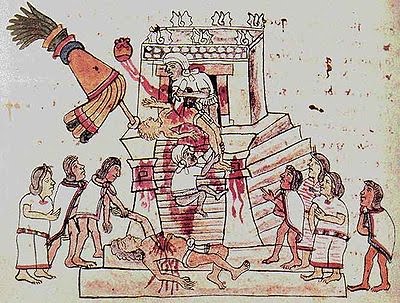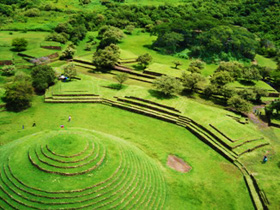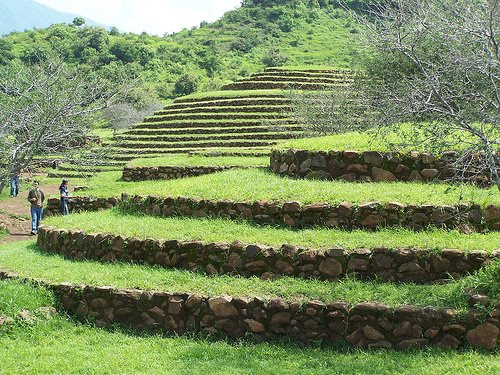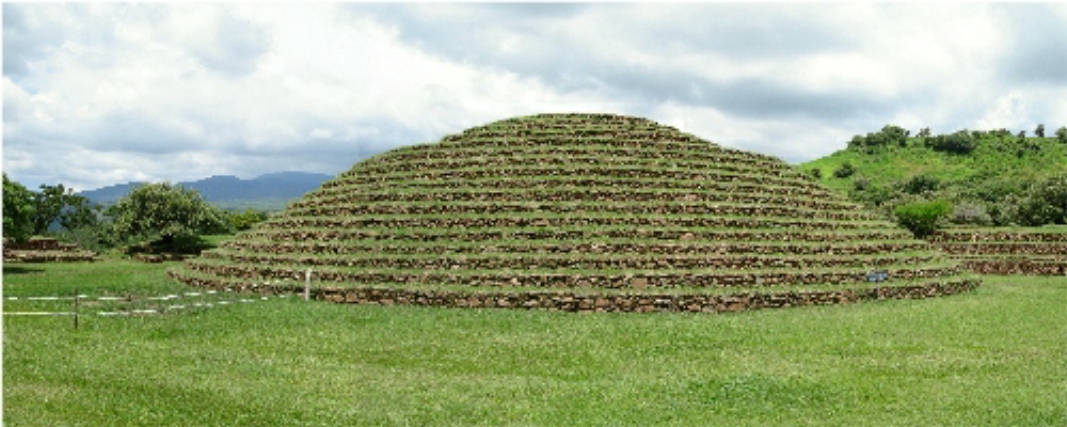The ball game could be considered a sport, a game, a religious, commercial, power-seeking and more. In Guachimontones have the remains of the ballgame largest and most important of his time.
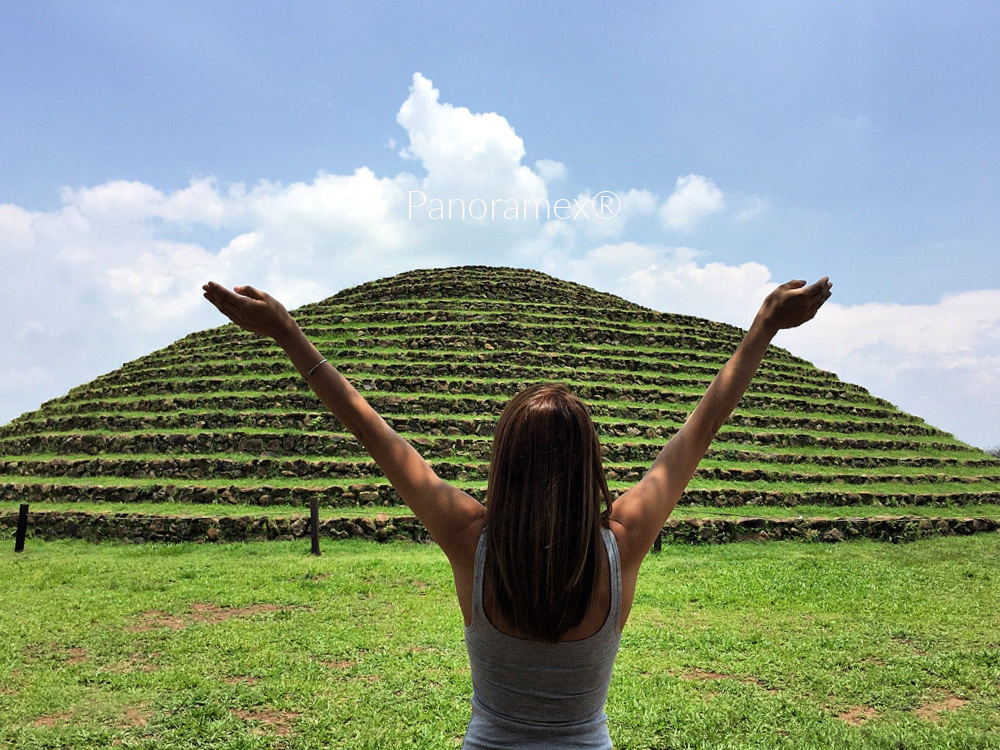
The ball game was called by the Maya “pok-ta – pok” or “pokolpok”,”taladazi”among the Zapotec and Aztec “tlachtli”and its practicedates back to 3,500 years in the past and was known from the Olmecs, the mother culture and perhaps before, and it was not until the Spanish arrived it was banned by the inquisitor Tomas deTorquemada, without necessarily disappear entirely, since it is still practiced in Mexico and Guatemala .
While in San Lorenzo, Veracruz state a ball court has been discovered built for the practice of this ritual, the most important evidence comes from the artistic production of the bearers of that mother culture
Chichen Itza is today, the largest field throughout Mesoamerica. Its measurements are 17 feet long. The pitches of the game were built in the form of an “I” capitalized with two walls of 7 uniform and a half meters high, which formed the sides. It was a field with a stone ring set in the side walls. At the entrance or exit if the ball passedfrom the side walls, it was considered inappropriate. The walls were covered with enjarre (Stuco), also the floor and the walls had pictures of gods. At the top were two rings, one on each wall. Dominican friar Diego Durán, who lived in New Spain between the years 1545 to 1588 the court described this way: The height of the walls were two to twelve feet high, spreading around. For the native customs, planting palm trees and red seed to drop, which was softand light wood, the walls were decorated with murals around orstone statues. The court was filled with sand when they played the ruling elite.
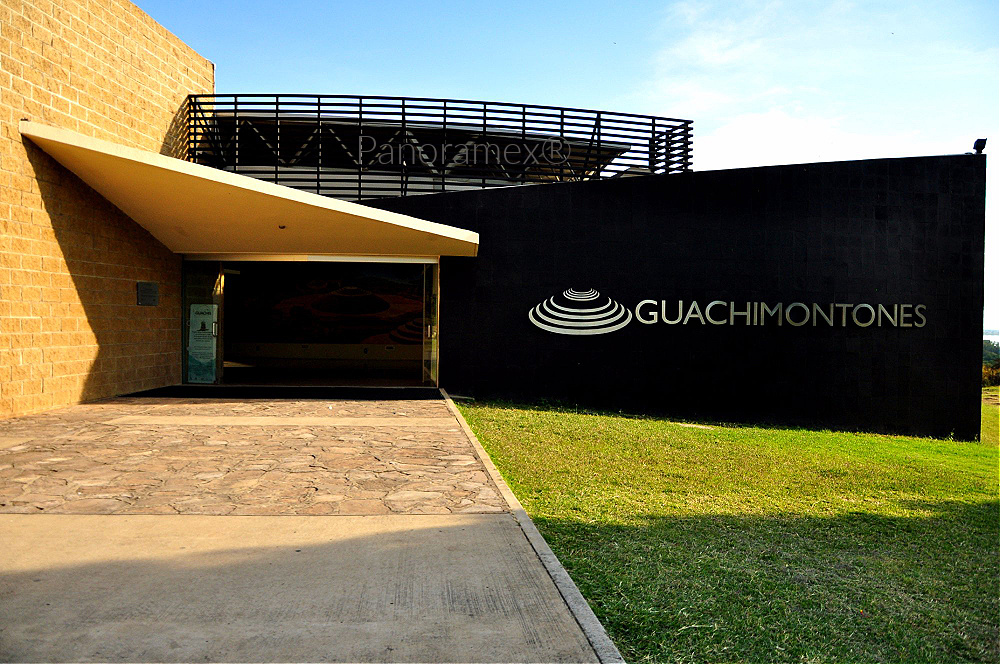
Ball courts were built in the form of a capital “I” with two walls of 7 uniform and a half meters high, which formed the sides. It was a field with a stone ring set in the side walls. At theentrance or exit if the ball passed from the side walls, it was considered inappropriate. The walls were covered with enjare,also the floor and the walls were pictures of gods. At the top were two rings, one on each wall. The Dominican friar Diego Durán, who lived in New Spain between the years 1545 to 1588 the court described this way: The height of the walls were two to twelve feet high, spreading around. For the native customs, planting palm trees and red seed to drop, which was soft and light wood, thewalls were decorated with murals around or stone statues. Thecourt was filled with sand when they played the ruling elite.
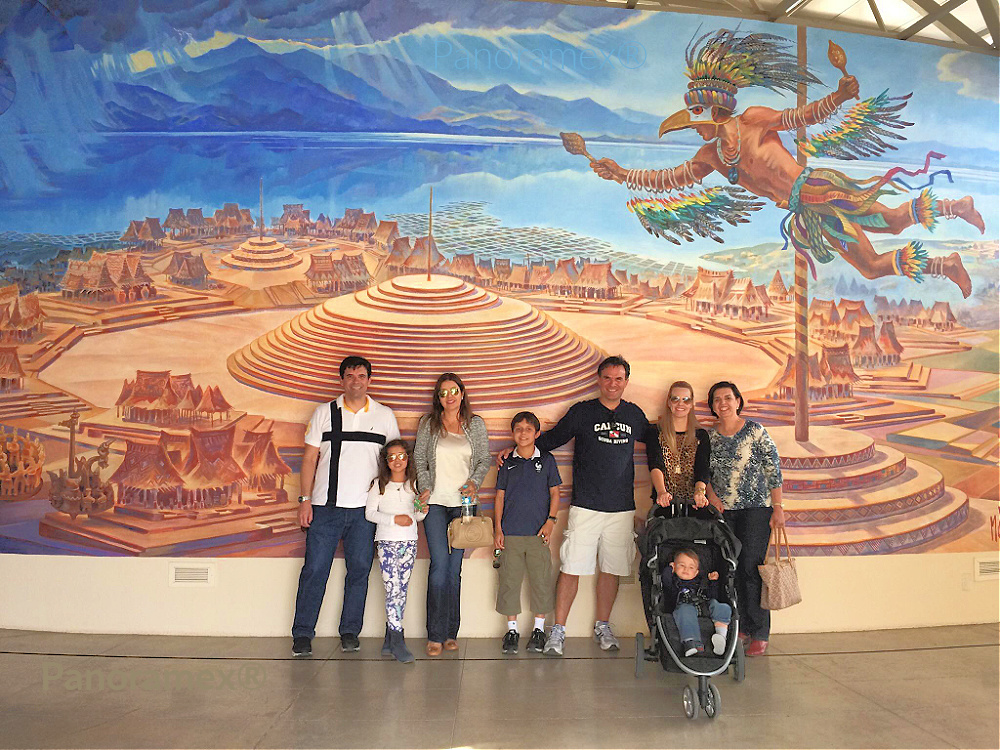
The Maya played because it was a performance of his history of the creation of the universe. In the Popol Vuh Maya known as theBible, the twin gods descend to hell to play the ball game against the gods of the underworld. They fall because they want to collect the bones of people, to create a new race of humans. Twins win the game and the gods of the underworld are given bones. According to legend this is how the Maya were created. The ball game for the Maya was then the symbol of life, death and reincarnation.
In the fifteenth century Mexico, although Mesoamerican centers as Tula, El Tajin, or of Yucatan have seen a remarkable fondness tlachtli or ball game.
The Maya played because it was a performance of his history of the creation of the universe. In the Popol Vuh Maya known as the Bible, the twin gods descend to hell to play the ball game against the gods of the underworld. They fall because they want to collect the bones of people, to create a new race of humans. Twins win the game and the gods of the underworld are given bones.According to legend this is how the Maya were created. The ball game for the Maya was then the symbol of life, death and reincarnation.
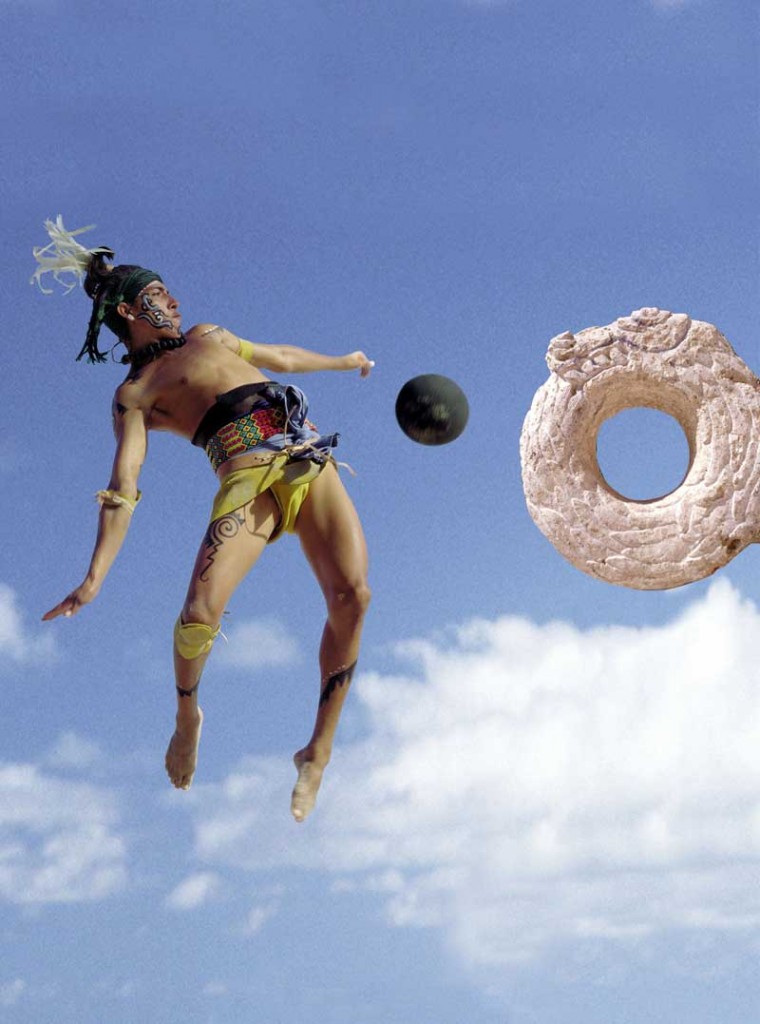
In the fifteenth century Mexico, although Mesoamerican centers as Tula, El Tajin, or of Yucatan have seen a remarkable fondness tlachtli or ball game.
Tlachtli is played on a court in a double T, with two teams whose respective areas are defined by the dividing line, and its goal is to pass a heavy rubber ball from one side to the other without touching with the hands or feet until some team will fall, if the ball came to pass through stone rings attached to the side walls was a sign of bad omen and all the people need protection. Despite be protected with clothes already described, are impacts that cause bleeding and even cause them death. But it appears that the cosmological symbolism that originally had this game has gone to a second term among Mexicans in relation to the bets that are generated around it.
Feathers, gold and slaves are the most common, but it is recalled that, as stated, the Aztec Tlatoani Axayácatl came to bet the market of Mexico-Tenochtitlan on one of these sets. Like other materials, rubber, was considered sacred nature, and it was used in the worship of the gods. In the various archaeological sites located in the region of Mesoamerica like the Guachimontones, objects made of rubber have been found, along with other offerings to the gods, such as the Sacred Cenote at Chichén Itzá. Our ancestors got the latex or rubber tree “or Ulcáhutl Olcuáhuitl” which means “Rubber Tree.” This is found in different regions of the Mexican Republic today, and his name varies from culture to culture.

The rubber became therefore great religious significance, even used in the Nahuatl language as a synonym of “movement”, the words soot and olli, which respectively, movement and rubber.Likewise, there was a link between the sacred tree sap and the blood and that from the religious point of view have the same meaning. Even with this importance, it is also used for nonreligious purposes, such as the manufacture of the heads of the hammers to strike the “teponaxtles” as medicine for eye diseases, stomach and intestines, to tighten the arms used in war. However, their employment ends with the manufacture of balls, used in the Sacred Game. The oldest representations of players who know, are the figures of “The Open” (Michoacán), dated around 1000 BCSimilarly, in the central altiplano (Ticomán, Tlatilco and Cuicuilco), has recovered ballplayers figurines, dating from 600 BC We have the gigantic, Olmec heads, dating from about the year 1000 BC, have been interpreted as severed heads, associated with the ritual ball game. This practice was staged in courts, (Talxchtlis), shaped as mentioned double T or I also America, which measures varied by geographic area in which they practiced, some already mentioned.
According to some historians, there were at least 4 variations of play, one of them in the courts with markers or pierced earrings, called Tlachtemalacatl, which also served to divide the court, and maximum score was introduced by drilling the ball ring held in the walls. The second, without Tlachtemalacatl, used as markers and dividers or shields circular altars like chincultick in Chiapas. In the third alternative, used a shovel or stick to bounce the ball as in western Mexico and purepecha area, where in addition, was reached using a ball covered with fabric and fiber, which is lit for night play. A fourth mode is the game with mittens and gloves, known today as “Pelota Mixteca”, which was played in the Valley of Oaxaca.
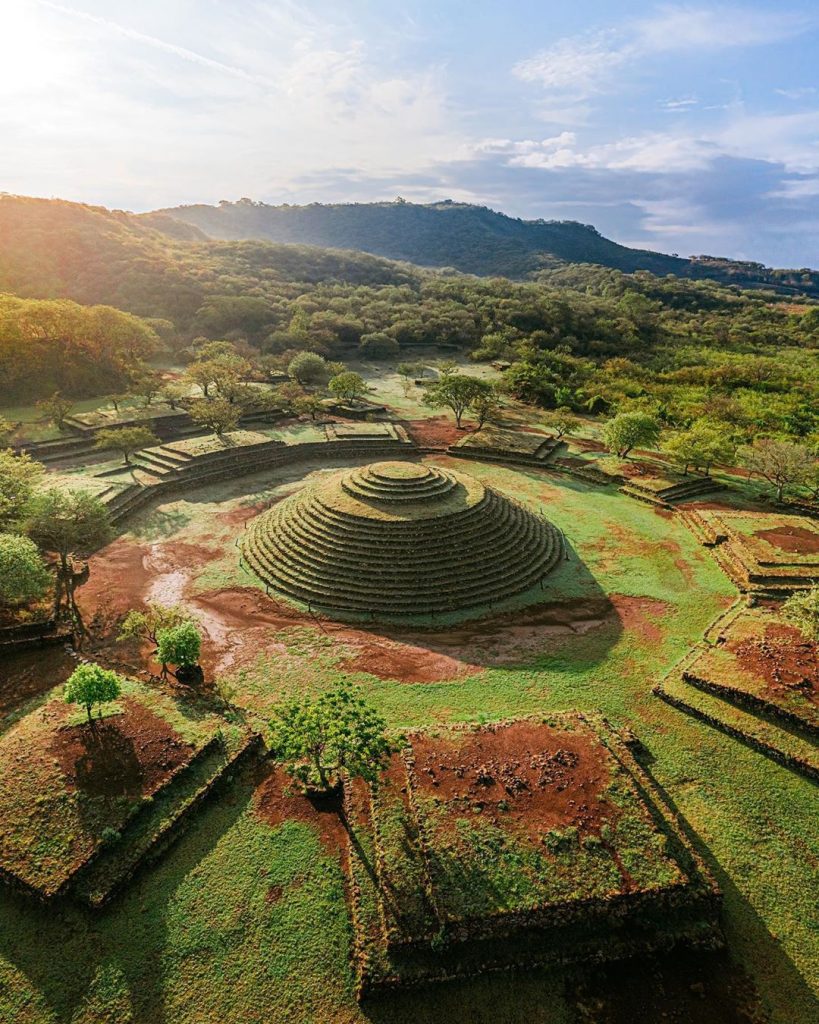
Although we know that already at the time near the Spanish conquest also played ball with a secular character and was linked directly with the clash of opposing elements of the universe, especially with the eternal struggle of light and darkness. Thus, the space, court or patio where they were playing had a similar connotation to the sky-plane, so that the players were transformed into beings of light or dark as the Sun, Moon and Stars. The game’s story is that bright team members hit the ball with their hips or their forearms looking to make moves that are impossible to account for the opposing team, and to achieve the triumph of light and the birth of the Sun while the other team will seek the dominance of the dark.
The ball game, in its endless succession, as a ritual of life anddeath, was one of the most important elements in the fabric thathad woven men and gods. During the night before the game waspaying homage at the altars of the gods, in order to win his favorand thereby obtain the magical power needed to win the tlachtli.The entry of players into tlachco was accompanied by the rhythmicsounds of the teponaxtli and rattles, flutes and rattles. The dancesand music are mixed in this magical ritual that is revered gods todeserve his favor and win.
The courts, where games were held as rituals, were located within the periphery of the major temples. In fact the ball game is also associated with fertility rites, is an initiatory ceremony for thewarrior, is a means to settle disputes, is related to the universe, isa game of honor, is a divine practice and was always played onlymen, among whom were slaughtered both players losing aswinning, some victims. Thought that the cosmos was older than thesun, the awake life with the creation of fire and exists only thanks to the sacrifice. In the celestial war, the sun comes through devouringstars (400) after defeat, the man is the earthly representative of thecosmos.
Needless to say, the ball game also has a rather sharp duality is that, besides its religious integration had a very mundane context.In this situation, we find that devotion or fanaticism for one or moreplayers reached its climax, when privately between “powerful lords”or with the general public, they came bets, indicating a cleardesecration of the game, giving him a recreational and profane.

